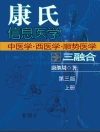One approach to the study of language has been to describe people
whose ability to communicate is impaired. Some researchers have
argued that it is possible to identify the component mental
processes that contribute to the ability to communicate by
describing the ways in which language can break down. Other
researchers have expressed doubts about the extent to which data
from impairment reflects normal language function.
This volume reflects the problems of constructing theory of how
the normal brain deals with language from data from impaired
individuals from the perspective of a range of disciplines:
psycholinguistics, linguistics, neurophysiology and speech-language
pathology. The chapters include critiques of methodology;
application of new technology; the study of bilingual people; and
cross-linguistic studies. A range of language skills is discussed
(phonology, prosody, syntax, semantics, reading and spelling) in
the context of both developmental and acquired impairments (hearing
loss, cerebellar dysarthria, sub-cortical aphasia, cortical
aphasia, phonological disorder, and dyslexia).
This book icludes contributions from researchers and clinicians
on both sides of the Atlantic as well as from Australia and Hong
Kong.
İçerik tablosu
Preface.
Acknowledgements.
Contributors.
Introduction: Words and nature, Leonard L. La
Pointe.
Chapter 1 Computational cognitive neuropsychology and
acquired dyslexia, Max Coltheart, Robyn Langdon and Michael
Haller.
Chapter 2 From snarks to boojums: why are prosodic
disbilities so rare? Paul F. Mc Cormack.
Chapter 3 Underlying representations in the acquisition
of phonology: evidence from ‘before and after’ speech, Andrew
Butcher.
Chapter 4 Insights into language structure and function:
some consequences of prelingual hearing loss, Ruth
Campbell.
Chapter 5 Individual differences in cognititive function
amount normal subjects and their implications for cognitive
neuropsychology, Randi C. Martin.
Chapter 6 Symptoms of disorder without impairment: the
written and spoken errors of bilinguals, Barbara J. Dodd, Lydia
K.H. So and Li Wei.
Chapter 7 The role of subcortical structures in language:
clinico-neuroradiological studies of brain-damaged subjects,
Bruce E. Murdoch.
Chapter 8 Cognitive neuropsychology and aphasia: a
critical analysis, Meredith Kennedy.
Chapter 9 Limitations of models of sentence production:
evidence from Cantonese data of normal and aphasic speakers,
Edwin M.-L. Yiu and Linda Worrall.
Synthesis.
Index.
Yazar hakkında
Karen Dodd is known for her research into the effects of therapeutic exercise for people with chronic disabilities, particularly neurological disabilities. She has published and presented extensively on this topic. She co-produced an innovative instructional DVD on strength training for people with cerebral palsy that won the Fred P. Sage award for the best audiovisual product at the American Academy for Cerebral Palsy and Developmental Medicine 60th Annual Meeting.
Ruth Campbell is Professor of Psychology at Goldsmiths College, University of London.
Linda Worralk is the editor of Evaluating Theories of Language: Evidence from Disordered Communication, published by Wiley.












